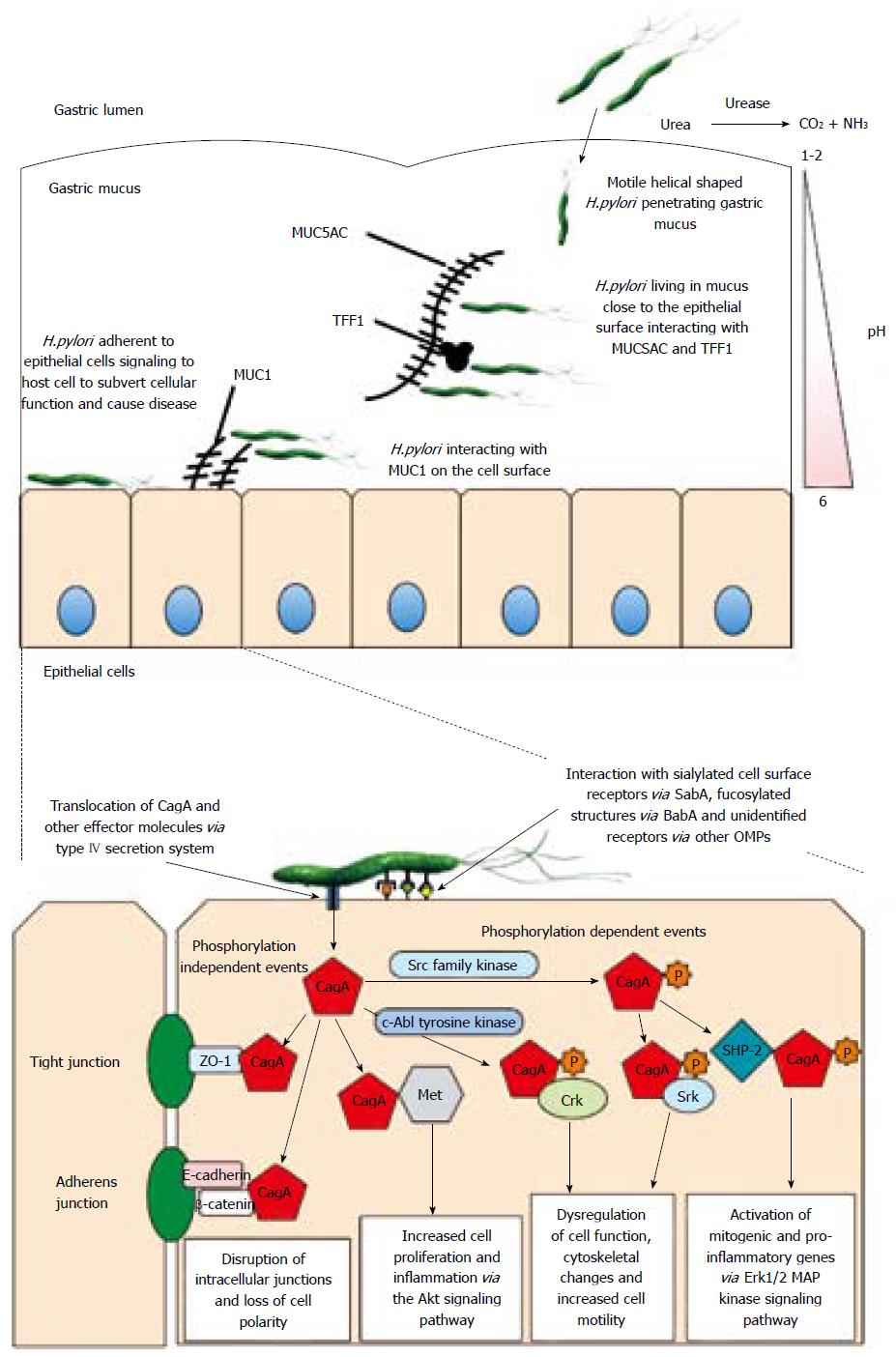Copyright
©2014 Baishideng Publishing Group Inc.
World J Gastroenterol. May 21, 2014; 20(19): 5610-5624
Published online May 21, 2014. doi: 10.3748/wjg.v20.i19.5610
Published online May 21, 2014. doi: 10.3748/wjg.v20.i19.5610
Figure 1 Colonization and infection of the gastric mucosa by Helicobacter pylori.
The majority of bacteria live in gastric mucus close to the epithelial surface. Motile, helical shaped bacteria can penetrate gastric mucus and escape the acidic conditions of the gastric lumen. Urease acts to generate ammonia in the presence of urea thus raising the pH and protecting the transiting bacteria from the effects of gastric acid. A subset of bacteria interact with gastric epithelial cells. Translocation of cytotoxin-associated gene A (CagA) from the bacteria into the host cell cytosol results in CagA phosphorylation dependent and CagA phosphorylation independent events occurring which subvert epithelial cell function.
-
Citation: Dunne C, Dolan B, Clyne M. Factors that mediate colonization of the human stomach by
Helicobacter pylori . World J Gastroenterol 2014; 20(19): 5610-5624 - URL: https://www.wjgnet.com/1007-9327/full/v20/i19/5610.htm
- DOI: https://dx.doi.org/10.3748/wjg.v20.i19.5610









